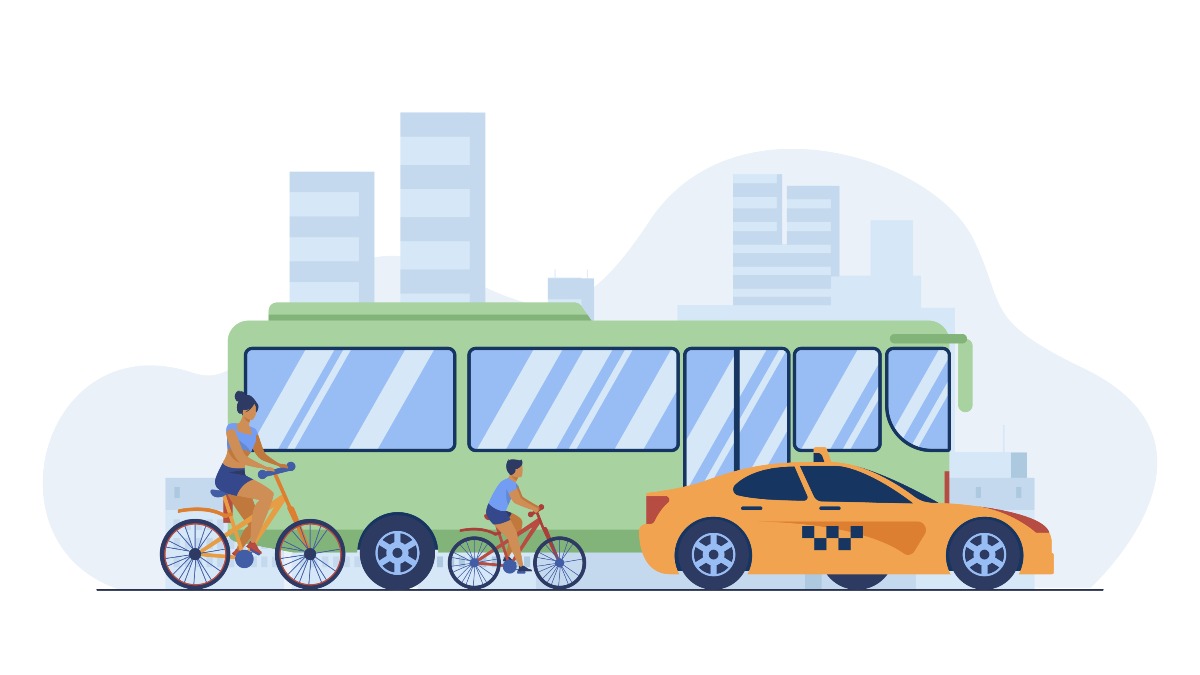Hi friend! Welcome to a new day with a new challenge.
Transportation is an integral part of our lives, enabling us to commute, travel, and access goods and services. However, it is also a significant contributor to greenhouse gas emissions and environmental degradation.
By adopting greener means of transportation, we can contribute to a more sustainable future while also benefiting our health and well-being.
Walking and Cycling:
Steps towards a healthier and greener lifestyle, walking and cycling are not only excellent ways to reduce our carbon footprint but also promote physical fitness. By choosing to walk or cycle whenever possible, whether it’s for commuting, running errands, or leisure activities, we can significantly decrease emissions while improving our own well-being. Local governments can further encourage this shift by investing in safe cycling lanes and pedestrian-friendly infrastructure.
Embracing Public Transportation:
A win-win solution, public transportation systems play a vital role in reducing traffic congestion and air pollution. By opting for buses, trams, subways, or trains, we can collectively reduce the number of private vehicles on the road and decrease emissions. It is crucial for governments to invest in expanding and improving public transportation networks, making them more accessible, reliable, and efficient for commuters.
Carpooling:
Sharing the ride for a cleaner environment, carpooling offers a simple yet effective solution to reduce the number of vehicles on the road. By sharing rides with friends, colleagues, or neighbors traveling in the same direction, we can significantly decrease emissions and contribute to a more sustainable transport system. Employers can also encourage carpooling by providing incentives such as designated parking spaces or flexible work arrangements.
Electrifying the Future:
The advent of electric vehicles (EVs) presents a promising opportunity to decarbonize the transportation sector. EVs produce zero tailpipe emissions and contribute to improved air quality in urban areas. Governments can support the adoption of EVs by offering incentives for purchasing electric vehicles, expanding charging infrastructure, and promoting research and development in battery technology.
Offsetting Carbon Emissions:
Taking responsibility for our footprint while striving for sustainable transportation options, it’s important to acknowledge that completely eliminating emissions may not always be feasible. In such cases, individuals and organizations can consider offsetting their remaining carbon emissions by investing in projects that reduce emissions elsewhere. Offsetting can be seen as an interim solution while we work towards long-term sustainable practices.
It is important to note that the best way to reduce your transport emissions will vary depending on your individual circumstances. If you live in a city with good public transportation, then public transportation may be the best option for you. If you live in a rural area, then walking, cycling, or carpooling may be more feasible.
The most important thing is to find ways to reduce your transport emissions and make a positive contribution to the environment. By making small changes to our everyday habits, we can make a big difference.
💪 The challenge of the day:
First, answer these questions:
- What is the average distance in km between your home and your school/college/work?
- How do you get there, most of the time?
Then:
- Try to take a greener way of transportation today or tomorrow! Then tell us how it compares with your usual commute 🙂
- If you are already doing that, how long have you started, and what are the pros and cons?
- If it’s impossible, can you share with us why?
✍️ Can’t wait to hear your thoughts. You can take a time of a day or two to respond in the comment!

